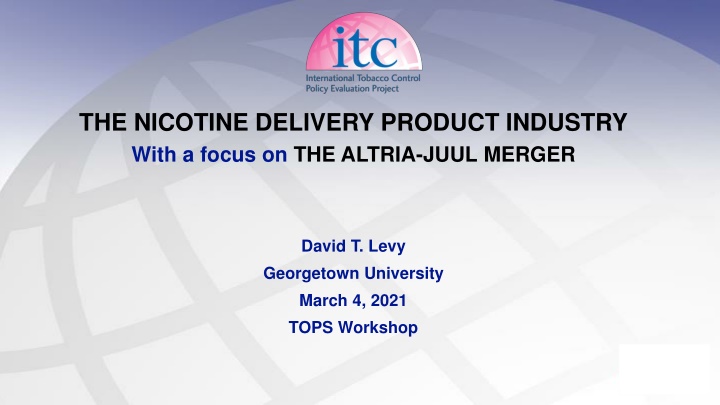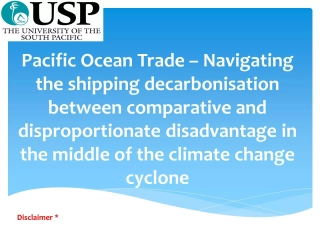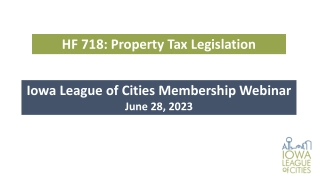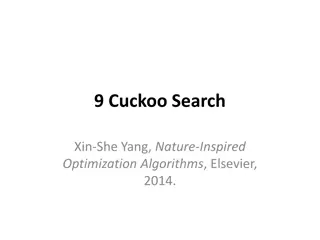
Insights on Altria-Juul Merger and Nicotine Delivery Industry
Gain valuable insights into the Altria-Juul merger and the evolving landscape of the nicotine delivery product industry. Explore the market competition, role of government policies, and potential implications for harm reduction. Understand the changing market structure and competition dynamics in nicotine delivery products.
Uploaded on | 0 Views
Download Presentation

Please find below an Image/Link to download the presentation.
The content on the website is provided AS IS for your information and personal use only. It may not be sold, licensed, or shared on other websites without obtaining consent from the author. If you encounter any issues during the download, it is possible that the publisher has removed the file from their server.
You are allowed to download the files provided on this website for personal or commercial use, subject to the condition that they are used lawfully. All files are the property of their respective owners.
The content on the website is provided AS IS for your information and personal use only. It may not be sold, licensed, or shared on other websites without obtaining consent from the author.
E N D
Presentation Transcript
THE NICOTINE DELIVERY PRODUCT INDUSTRY With a focus on THE ALTRIA-JUUL MERGER David T. Levy Georgetown University March 4, 2021 TOPS Workshop
Funding and Conflict of Interest No conflicts of interest to declare. Today s talk is based on work funded National Cancer Institute under grant P01CA200512 to the ITC. I have also received numerous other grants from NCI, including as PI of an FDA TCORS. I have also received funding from Bloomberg Foundation and from WHO. The discussion is based on papers with many co-authors, to whom I am indebted. However, the views today represent my own.
My Background Most of my recent work involves models and empirical studies of tobacco/e-cigarette use, policy and public health impacts In my previous life: My PhD is in Economics (UCLA). My dissertation and early publications focused on market competition and organization of the firm. Worked at Federal Trade Commission and served as an expert witness on antitrust merger cases Getting back to my roots
Five Related Background Papers Levy DT, Chaloupka F, Lindblom E, Sweanor D, O'Connor R, Shang C, Borland B, The US Cigarette Industry: An Economic and Marketing Perspective. Tobacco Regulatory Science, March-April 2019. Levy DT, Lindblom E, Sweanor D, Chaloupka F, O'Connor R, Shang C, Palley T, Fong GT, Cummings KM, Goniewicz ML, Borland B. An Economic Analysis of the Pre-Deeming US Market for Nicotine Vaping Products, Tobacco Regulatory Science, March-April 2019. Levy DT, Sanchez-Romero LS, O Connor RJ, Goniewicz ML, Borland R. The Altria-Juul Labs Deal: Why Did it Occur and What Does it Mean for the US Nicotine Delivery Product Market? Tob Control, 2020. Levy DT, Douglas CE, Sanchez-Romero LM, Cumming KM, Sweanor D. Commentary: An Analysis of the FTC s Attempt to Stop the Altria-Juul Labs Deal, Tobacco Regulatory Science, July/August, 2020. Levy DT, S nchez-Romero LM, Douglas CE, Sweanor DT. An Analysis of the Altria-Juul Labs Deal: Antitrust and Population Health Implications, Journal of Competition, Law and Economics, 2021.
Presentation Rationale: Focus on Market Competition Market Structure and Competition play an important underlying role Government Policies Central to the harm reduction debate Underlying different perspective, i.e., will the cigarette industry eventually gain back control of nicotine vaping products (NVPs, e.g., e-cigarettes)? Market Structure and Competition Nicotine Delivery Product Use The role of market structure and competition is generally overlooked!
Background Previous to 2005, the cigarette industry was the primary focus of tobacco control. Cigarette companies were minimally involved with other tobacco products. Since 2005, the industry environment has since changed and smokers more often use a variety of products (NVPs, smokeless tobacco, little cigars). A tale of two markets: To understand overall nicotine product use, it is now especially important to understand the industry environment. I will discuss the pre-2005 industry and then the post-2005 market including the recent Altria-Juul merger. Industry analyses will be based on the economics/marketing literature, and the DoJ-FTC Merger Guidelines.
Framework: FTC and DoJ Merger Guidelines Market Definition isbased on the ability of firms in an industry to effectively raise price, i.e., few effective substitutes for the product and limited entry. Industry Concentration is based on market shares individually and combined, e.g., four firm concentration in the defined market. Entry Barriers restrict the ability of firms to enter and bring down price (or innovate), such gaining reputation, essential inputs, having necessary technological and marketing knowledge, and overcoming regulatory constraints. Market Conduct examines whether firms engage in anti-competitive behavior, e.g., pricing behavior, including coordinated pricing, price discrimination and predatory pricing.
Pre-2005 Cigarette Industry Market Definition: considers whether customers are willing and able to switch to other substitute products when faced with price increases (but entry factors in) Until mid-2000s, there were few good perceived substitutes for cigarettes. Smokers were relatively insensitive to price, indicative of addiction. In antitrust merger cases, the FTC defined the market as composed of US cigarette companies. Industry Concentration: based on market shares individually and combined Cigarette industry has been concentrated since at least the 1950s w/6 major firms The industry became increasingly concentrated: Growth of Marlboro and consequent increase in Philip Morris s market share Industry mergers (most recently involving Reynold s purchase of Lorillard and Brown-Williamson both sanctioned by the FTC) - Cigarette industry is now highly concentrated with Altria, BAT and Imperial
Herfindahl Index (HHI) of Industry Concentration, Cigarette Industry, 1947-2015 4000 3500 2013 Reynolds merger w/ Lorillard 2004 Reynolds merger w/ Brown & Williamson 3000 1991 price war Marlboro Friday 2500 2000 1971 Ban on television and radio advertising *HHI<1500 as unconcentrated ( unlikely to have adverse competitive effects ) *1500<HHI< 2500 as moderately concentrated ( raises significant competitive concerns ), *HHI> 2500 as highly concentrated 1500 1000 500 0 Herfindahl Index: based on Maxwell Reports (various years) Herfindahl index as calculated by FTC (2015)
Cigarette Industry: Pre-2005 (cont.) Entry Barriers: inability of non-established firms to effectively compete. In the cigarette industry, the following entry barriers have been identified: Reputation: brand name and importance of advertising scale Proliferation of products: providing a broad array of products to preempt other firms Retail slotting allowances: buy up limited retail shelf space, also used for price and display promotions. Legal: compliance with tobacco control and the threat of lawsuits Market Conduct: whether existing firms are engaging in anticompetitive behavior: Coordinated behavior based on observed pricing patterns (firm engaging in collusive pricing and raising price more than a tax increase). Predatory pricing: temporarily lowering prices to limit or exclude rivals (M-boro Friday) Price discrimination: selectively charging lower prices (e.g., coupons, other discounts) to some consumers (e.g., youth and low SES).
Post-2005 Market: Cigarettes Consumer Behavior: Increased use of smokeless tobacco, little cigars, and NVPs alone and together with cigarettes Higher demand elasticities for cigarettes and other products and high cross price elasticities. Industry Behavior: Cigarettes still highly concentrated. Cigarette companies bought up major smokeless tobacco cos. and added their own smokeless products. Altria purchased a major cigar company. Cigarette companies entered the NVP market through merger and de novo growth, but were not able to gain a large share until Altria purchased Juul. Cigarette companies entered the heated tobacco product market (IQOS) In sum, the market became much more competitive, with more product overlap, the market could now be defined as the nicotine vaping product market
Nicotine Vaping Product Market: Industry Table 2. Market Shares of the Three Leading Firms in Conventional Retail, by Year Cowen Reports Started as only independent companies, cigarette companies entered the NVP market through merger and de novo growth, but were not able to gain a large share, except in retail, which they lost with the growth of Juul Company/Year Ballantyne CB Distributors NJOY Imperial Japan Tobacco BAT (Reynolds) Altria Juul 2011 17% 23% 30% 2012 2013 2014 2015 2016 2017 2018 24% 22% 17% 22% 42% 12% 33% 16% 15% 22% 14% 33% 28% 38% 14% 30% 15% 25% 21% 12% 55% Substantial entry and rapidly changing market shares. Rapid innovation- first to fourth generation NVP products Prices generally falling at least through 2017, also considerable price variation (i.e., lack of coordinated pricing) Products sold over different consumer channels: internet, mass market retail (7-11s, pharmacies and grocery stores), tobacco shops/kiosksand vape shops Stock prices of cigarette companies, consistently rising, then plummeted starting in 2017 as Juul grew
Structure of the NVP Industry Stage Three: Consumer Channels Stage Two: Device Marketing Stage One: Components Conventional Retail Markets CIGARETTE MANUFACTURERS Mostly disposables and refillables DEVICES Disposables Other retail: tobacconists, kiosks Reusables: Closed and open systems Vape Shops INDEPENDENTS All kinds of devices, including tanks and mods LIQUIDS Internet
Nicotine Vaping Product Market: Consumer Behavior Initially use was mostly smokers or likely smokers Dual use Those switching to NVP use Those using NVPs to quit Those using NVPs instead of initiating into smoking Users often start with one brand or type of NVP and switch to another. Each generation of device a better substitute for cigarettes. Consumers started buying over the internet and vape shops grew rapidly, retail was no longer dominant. The internet and later vape shops played a large role in providing information to consumers.
Market Segments and Industry Shares (in millions) Market Segments and Industry Shares (in Millions) MARKET SHARES 2015 MARKET SHARES 2017 2014 2015 2016 2017 2018 2019 2019 42.4% 31.8% Disposables and Closed system E-cigarettes 1,000 1,400 1,600 1,400 3,800 6,400 71.1% 18.2% 15.9% Mass Market Retail (Convenience, Food & Drug) 600 600 700 700 2,600 4,400 48.9% 12.1% 9.1% Online 200 400 500 400 800 1,200 13.3% 12.1% 6.8% Other Retail (including tobacconists and kiosks) 200 400 400 300 400 800 8.9% 57.6% 68.2% Tanks/Mods & Personal Vaporizers (Open Systems) 1,500 1,900 2,500 3,000 2,800 2,600 28.9% 9.1% 11.4% Mass Market Retail (Convenience, Food & Drug) 300 300 500 500 400 550 6.1% 12.1% 15.9% Online and other retail outlets 300 400 600 700 600 1,700 18.9% 36.4% 40.9% Vape Shops 900 1,200 1,400 1,800 1,800 350 3.9%? 100.0% 100.0% 2,500 3,300 4,100 4,400 6,600 9,000 71.1% Total Source: Wells Fargo Securities Growth in vape shops and online through 2017, then in retail vaping products through 2019 15
Nicotine Vaping Market Market has been highly competitive with prices falling, rapid innovation and rapidly changing market shares, consistent with Shumpeter s description of dynamics of capitalism as the process of creative destruction. The growth of Juul is an example, but Imperial already sells the Juul-like Myblu, and BAT sells the Juul-like Vuse Alto. Independents have also develop better substitutes for cigarettes. New consumer channels beside mass market retail, with the internet and vape shops playing an important role at least until recently. Government regulation has been minimal. FDA deeming occurred in late-2016 FDA, but the deeming rule has not been enforced. Deadlines for product review have recently been set by court order, although extended. The future of new and existing products is likely to depend heavily on FDA regulations. FDA approved the heated-tobacco product iQos to be sold by Altria. These products are likely close substitutes for NVPs, but involves more proprietary technology.
The Rise of Juul 90% 80% 70% 60% 50% 40% 30% 20% 10% 0% Unit market share Dollar value market share Juul s Market Share of Mass Market Retail Sales, Nielsen Data from Wells Fargo Reports
Altria-Juul Deal The Altria-Juul Deal On December 19, 2018, Altria, the largest cigarette company, announced an offer of $12.8 billion for a 35% share of Juul Labs Inc, the largest and then fast-growing vaping company. The price was based on an unexpected $38 billion valuation, much higher than previous valuations. The deal includes a 6-year agreement, in which Altria would not be allowed to acquire additional Juul shares above the agreed 35%. The agreement allowed Altria to appoint an observer to JL s board of directors, and appoint three members of the board after converting its shares to voting securities. Soon after the deal, Altria declared its intention to abandon its NVP business. Altria would provide Juul favored treatment via inserts and retail shelf space. 18
FTC vs Altria and Juul Deal The Altria-Juul Deal On April 2, 2020, the FTC filed an administrative complaint (5-0) alleging that Altria and Juul Labs entered a series of agreements ( merger ) that eliminated competition and violated federal antitrust laws. It also found that Altria and Juul had been direct competitors in the market for closed-system e-cigarettes. FTC limits the market to closed system (retail) NVPs. Altria leveraged its ownership of leading brands across tobacco categories to secure favorable shelf space from retailers. Regulatory barriers also mentioned. As competitors before the deal, Altria and Juul monitored each other s e-cigarette prices and raced to innovate. The deal removed competition between Altria and Juul. An administrative hearing to decide the matter was scheduled to begin on January 5, 2021, but has been delayed. 19
Potential Efficiencies from Altria-Juul Deal In the short-run, increased competition between cigarette companies, i.e., BAT sued Altria regarding HTPs and may increase marketing of Vuse Alto. Encourage vaping companies to enter and expand to reap the benefits of a lucrative buy-out Protect against patent infringement of Juul and provide financing to develop new products Help gain regulatory approval or any new NVP products Gain greater access to retail shelf space Help to more effectively market products Improve quality control in production
Antitrust Concerns: Current Market & Industry Concentration Based on the analysis above, the current market is composed of all nicotine delivery products other than NRT, including cigarettes, cigar, smokeless tobacco, NVPs, heated tobacco products (HTPs). Within that market, Cigarette submarket is highly concentrated: By 2019, market share of Altria at 54% (Marlboro at 47%) and Reynolds American at 34%, Imperial at 7% Smokeless tobacco submarket is highly concentrated: market share of Altria at 54% and BAT is 34% Altria has 35% of cigar market Altria sells only HTP (IQOS), likely to continue to be controlled by cigarette companies in the future For NVPs less is known. Before Juul s entry, 2017 Nielsen mass market retail data show Altria had a 16% share and the four cigarette companies had a combined 72% share. After Juul (July /19), Altria share fell to 7% and to 25% for all cigarette firms. We know less about shares in the internet, vape shop, and other retail sectors. With the Juul merger, Altria has had large shares of the cigarette, smokeless, cigar, NVP and HTP submarkets, and those submarkets are now more concentrated.
Current Entry Barriers Entry Barriers from the pre-2005 cigarette market (reputation, slotting allowance, legal) are still relevant to cigarettes, smokeless and cigars. Entry barriers are less clear for NVPs where there was been rapid growth, entry of new firms and products, minimal start-up costs (especially for the internet), and marketing is easier: internet, social media, and word of mouth. Retail slotting allowances are not yet an entry barrier for NVPs, since much is sold through the internet and vape shops, but mass market retail may be more important in future years especially if vape shops are curtailed. Switching Marlboro smokers to Juul thereby leaving less market share to other firms, especially entrants. The primary entry barrier is probably regulatory hurdles, especially FDA approval required for new and many existing products (very expensive and timely). Likely to entrench the major firms.
Potential Conduct following Altria-Juul (Economic) Altria has substantial market share in all nicotine delivery sub-markets, with the potential to act as dominant firm/price leader. The merger may enable Altria to keep existing firms in line and discourage entry, and, in particular, protect the highly profitable cigarette market. Similar to pre-2005 market, the merger can enable Altria to engage in earlier cigarette industry behaviors: Slotting allowances to limit other firms from retail Target marketing to entrants and non-followers Preempt other firms through new products (especially with their greater ability to overcome FDA regulatory hurdles) Pricing products to protect cigarette profits, including predatory pricing to inhibit rivals Price discrimination to expand particular sub-markets at the expense of others
Potential Conduct following Altria-Juul (Public Health) Discourage consumers from switching from (high profit) cigarettes to (lower profit) and less harmful NVP use, e.g., via pricing practices and marketing practices that discourage complete switching and encourage dual use Cigarette cos. promote use of less safe heated-tobacco-products over NVPs More effectively marketing to youth and young adults Blur information on the relative harm of different products Lobbying or instituting court cases to protect cigarette sales, while discouraging NVPs
Summary of findings The market has changed substantially since 2005 to a more competitive market. Before the Altria-Juul merger, there was strong competition, with innovation and rapid declines in cigarette use. The cigarette and smokeless tobacco submarkets are now highly concentrated. The NVP submarket is less clear (especially regarding the vaping and internet sectors), but will depend heavily on regulatory entry barriers. With Altria having a large market share in the key nicotine delivery product submarkets and important entry barriers, Altria could effectively act as a dominant firm and limit the NVP market. Competition by current independent firms and potential entrants in the vaping submarket could be reduced, thereby increasing prices and targeted marketing and reducing product innovation.
Potential Competitive and Efficiency Considerations Recommended Future Modeling and Empirical Research The trade-off of the 4Ps (price, product, promotion and place) to firms, including the use of different marketing channels. Industry response to regulations, especially w.r.t 4 Ps, e.g., promotion or existing or develop new products following a tax increase. The different incentives of single product (i.e., independent NVP) vs multiproduct company (i.e., Altria), especially with regard to products that are close substitutes (e.g. HTBs and NVPs). The impact of independents on competition. Understanding the incentives of independents vs. multiproduct firm to influence/manipulate regulations.
Conclusions The Altria-Juul merger has important public health as well as anti- competitive implications and should be a focus of public health. Control of the NVP market by cigarette firms is not a forgone conclusion. Industry structure and behavior can have an important influence on the effectiveness of tobacco control policies, and should be considered by FDA and public health advocates and in developing effective policies. Both economic models and empirical analysis of industry behavior are needed to better understand the role of industry. As part of the ITC, we are now expanding public health impact models to incorporate how policies impact the industry and how industry behavior impacts the effectiveness of tobacco control policies.






















